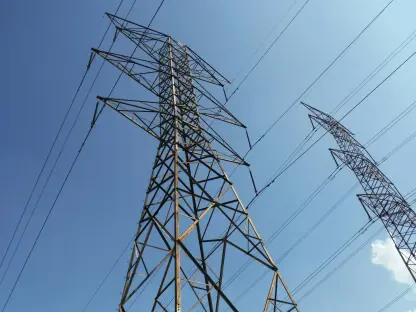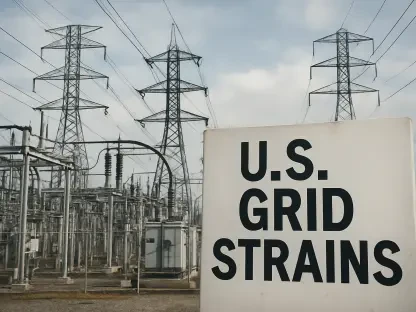The recent move by the White House to assert authority over the Federal Energy Regulatory Commission (FERC) and other independent regulatory agencies has sparked significant interest and debate. This step is based on an executive order issued by former President Donald Trump, which mandates these agencies to submit major regulatory actions for review by the Office of Management and Budget’s Office of Information and Regulatory Affairs. The order argues that independent agencies wield substantial executive power but lack accountability to the president, which undermines their effectiveness and the cohesive execution of federal law, according to Trump.
Mandated Collaboration Guided by Presidential Policies
Coordination Between FERC and Executive Leadership
FERC Chairman Mark Christie, along with other agency heads, has been instructed to collaborate with leaders of the Office of Management and Budget (OMB), the White House Domestic Policy Council, and the National Economic Council. This directive places a significant emphasis on ensuring that the activities of independent regulatory agencies align closely with the president’s policies and objectives. The OMB director has been tasked with setting performance standards, evaluating efficiency, and bringing the agencies’ work into harmony with the administration’s broader goals.
For FERC, this executive order represents a new and uncertain landscape. The Federal Energy Regulatory Commission operates under the Department of Energy Organization Act, a statute that prevents the Department of Energy (DOE) from directing FERC’s actions. The Act was designed to maintain a level of independence for FERC, recognizing its specialized role in overseeing national energy policy and regulation. This statutory provision raises questions about whether an executive order can override the legislative protections that ensure FERC’s operational autonomy.
Although the executive order indicates a desire for greater oversight, it remains to be seen how FERC and similar agencies will respond in practice. The scope of the order and its ultimate impact could lead to significant changes in how these agencies conduct their work. The primary concern for many observers is whether such increased control could hinder FERC’s ability to make impartial and expert-driven decisions about energy regulation and infrastructure.
Balancing Autonomy and Accountability
The discussion around executive control underscores a broader debate about the balance of power and accountability within the U.S. federal system. Independent regulatory agencies like FERC were established to operate with a degree of separation from direct political influence, allowing them to make decisions based on technical expertise and long-term policy considerations. However, the argument presented by the Trump administration is that these agencies still exercise executive authority and, as such, should be subject to presidential oversight to ensure coherent implementation of federal policies.
This contention has reinvigorated conversations about the appropriate level of independence for regulatory bodies. Historically, the creation of independent agencies aimed to insulate specific functions from the political pressures of changing administrations, thereby fostering continuity and stability in crucial regulatory areas. The push to enhance presidential influence over these agencies challenges this tradition and suggests a reevaluation of their role within the administrative state.
The implications of this shift are multifaceted. On one hand, there’s the potential for increased accountability and alignment with the president’s policy vision, which could lead to more streamlined and cohesive federal governance. On the other hand, there are concerns about the potential erosion of agency expertise, impartiality, and their ability to address complex regulatory issues free from partisan considerations. These concerns speak to the core of the ongoing debate about the nature and function of independent regulatory agencies in the modern era.
Legal Challenges and Historical Precedents
Supreme Court Decision and Impacts on Tenure Protections
In addition to the executive order’s potential impact on regulatory action, the Trump administration had also signaled its intent to remove members of certain independent agencies. High-profile examples include the Federal Trade Commission (FTC) and the National Labor Relations Board (NLRB). This move is anchored in a 2020 Supreme Court decision that limits tenure protections only to agencies that do not hold substantial executive power. This decision was seen as a pivotal moment in the reevaluation of long-standing precedents governing executive control.
The Department of Justice has expressed its intention to challenge the historical tenure protections upheld by the 1935 Humphrey’s Executor precedent. The Humphrey’s Executor ruling established that members of certain independent regulatory agencies could only be removed for cause, thus ensuring these entities could operate independently from direct presidential interference. By targeting this precedent, the Trump administration sought to expand the president’s ability to remove and replace agency members more freely, thereby increasing executive control over regulatory functions.
This legal strategy indicated a profound shift in the understanding of executive power and its relationship with independent agencies. It raised questions about the future of regulatory independence and the degree to which the president could exert influence over agencies traditionally designed to serve as checks on executive authority. The broader implications of this shift in power dynamics could reshape the landscape of federal regulation, affecting a wide range of sectors from energy to finance to labor relations.
FERC’s Statutory Independence and Potential Contention
While FERC was not explicitly categorized in these broader discussions, its unique position within the regulatory framework meant it could not be entirely excluded from consideration. The DOE Organization Act, which outlines FERC’s structure and functions, includes provisions that afford FERC a degree of protection from direct executive control. Specifically, it defines the conditions under which a president may remove a FERC commissioner, generally requiring cause related to misconduct or incapacity.
Given these statutory protections, any presidential attempt to dismiss a FERC member could be met with significant legal challenges. Such actions would likely spark debates about the validity of subsequent regulatory decisions made by replacement commissioners, raising concerns about the stability and continuity of federal energy policy. The legal contention surrounding these matters would not only test the boundaries of executive power but also challenge the principles of regulatory independence that have long guided agencies like FERC.
The practical impact of these debates on FERC’s operations remains a subject of speculation. The agency is tasked with highly technical and specialized responsibilities that require a significant degree of expertise and impartiality. As such, external pressures from the executive branch could complicate FERC’s ability to fulfill its mandate effectively. However, the broader conversation about the balance of power and accountability within the federal system underscores the dynamic and evolving nature of regulatory governance in the United States.
Future Considerations and Potential Outcomes
Navigating Regulatory Landscape Amid Increased Oversight
The assertion of executive control over independent regulatory agencies has set the stage for ongoing debates and potential legal battles. As agencies like FERC navigate this new landscape, they must reconcile the demands for increased oversight with their mandate to operate independently and make decisions based on technical expertise. The executive order, with its sweeping directives, may prompt a reevaluation of how these agencies balance political accountability with the need for regulatory impartiality.
Moving forward, the key challenge will be to ensure that the core functions of independent agencies are not compromised by heightened executive influence. Maintaining the integrity of regulatory processes while adhering to the president’s policy priorities will require careful negotiation and collaboration between agency leaders and executive officials. The outcome of this delicate balance will have significant implications for the regulatory environment and the broader execution of federal policy.
Long-Term Implications for Federal Regulatory Policies
The White House’s recent decision to exert control over the Federal Energy Regulatory Commission (FERC) and various other independent regulatory agencies has ignited widespread interest and controversy. This move is grounded in an executive order from former President Donald Trump, which requires these agencies to submit significant regulatory actions for review by the Office of Management and Budget’s Office of Information and Regulatory Affairs. According to Trump, the executive order claims that independent agencies possess considerable executive power but are not accountable to the president. This perceived lack of accountability, Trump argues, diminishes their effectiveness and disrupts the unified execution of federal law. This assertion has led to debates about the balance of power, the role of independent agencies, and the extent of executive oversight. The implications of this move could reshape the landscape of regulatory authority in the U.S., raising questions about the future operational dynamics between the president and these regulatory bodies.









